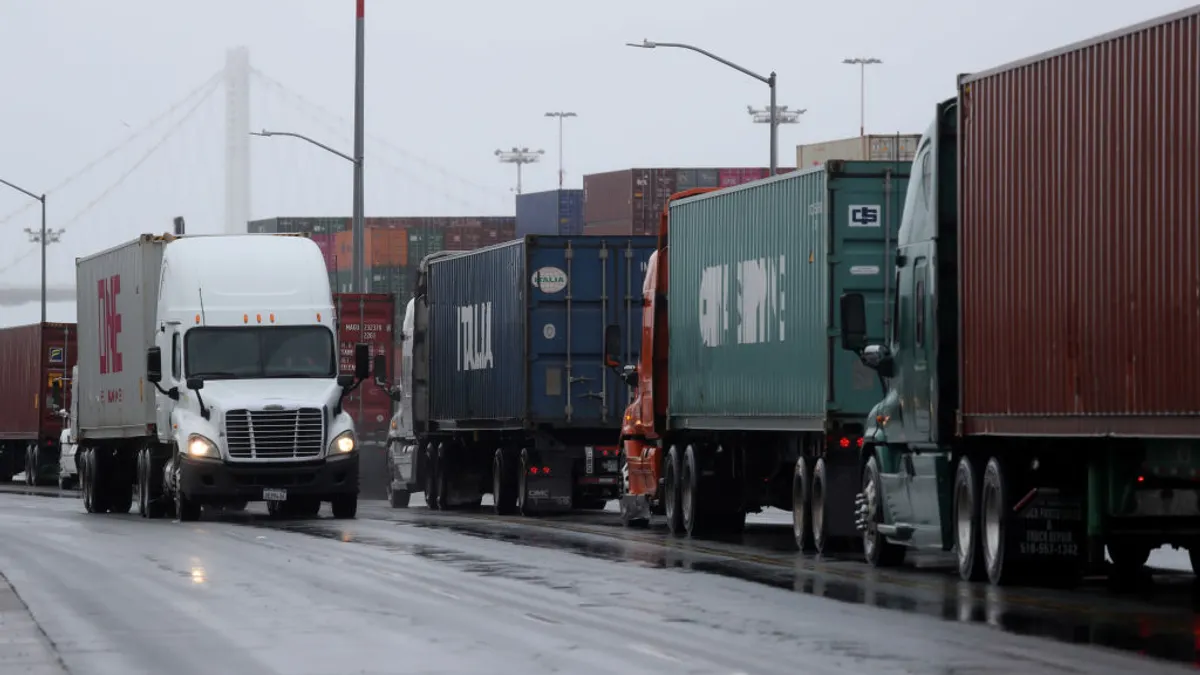Dive Brief:
- The number of long-distance general freight trucking jobs is projected to decline by 50,000 this year, ACT Research VP and Senior Analyst Tim Denoyer told Transport Dive. The scale of the drop is one not seen since the early days of the COVID-19 pandemic.
- A reduction of 8,700 positions occurred in Q1, but sharper declines could take place in Q2 given the weak freight market, he said. The industry had a total of 836,500 positions at the end of 2022, according to Bureau of Labor Statistics data.
- The reduction in labor capacity comes as spot rates bottom out or have already bottomed out, Denoyer told Transport Dive, making way for a new freight cycle.
Dive Insight:
The shedding of overcapacity in trucks could adversely affect the number of available drivers, leading to the possible return of a driver shortage late this year or next, according to ACT.
“We’re certainly in what we would call a surplus at the moment,” Denoyer said as a guest on DAT’s weekly market update show Tuesday. “We’re in the process of beginning to swing back to a driver shortage.”
Employment declines could push freight back into the spot market over the coming quarters, Denoyer said on the show.
The BLS data point for April, showing a contraction to 828,700 workers, captures for-hire fleets in contrast to owner-operators or private fleets. Over the last decade, the industry has generally added jobs during Q1.
Additionally, revocations in trucking operating authority could help the industry’s negogiating power in the long run. “This is beginning to tighten capacity, which will also help spot rates find the bottom and begin to rise,” ACT noted in a May report.
Net revocations in interstate operating authority have had an overall decline of around 11,000 fleets since October, according to ACT. DAT puts the overall industry reduction at roughly 15,000 carriers. ACT and DAT calculate their revocations numbers based on Department of Transportation data.
But it’s unclear how many individual trucks have been taken off the road because the department’s revocation data does not specify the number of vehicles in each fleet, Denoyer said. Still, the national average is eight trucks per fleet, he noted, helping show the extent of the change.
Another caveat to the federal data, Denoyer added, is that some fleets are relinquishing their operating authority and joining larger firms, making the federal revocation data more difficult to understand.
“But directionally, I think we’re taking out capacity at a rate that I’ve never seen before,” he said. “Revocations are happening faster than they’ve ever before.”











